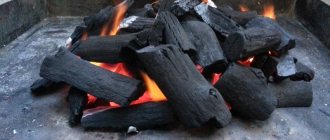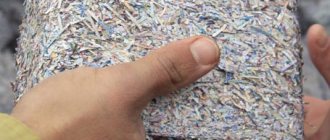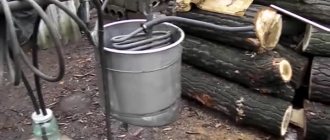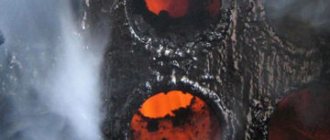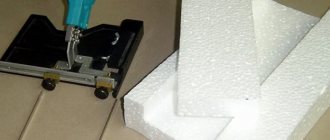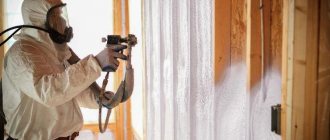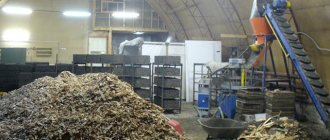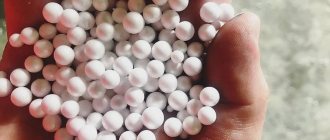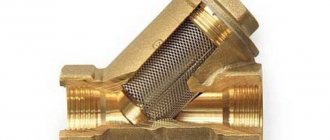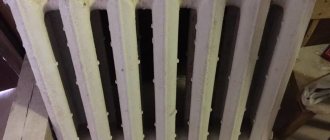Many of us love to sculpt things from clay. Making crafts is a fun and creative process. But if you leave them as they are, they will quickly collapse. To give clay products new characteristics, they are exposed to high temperatures. This is called roasting. Due to this, the clay loses moisture and the weight of the craft decreases. The clay becomes a single strong object, and resistance to liquid appears. The fired product is made more durable and ready for use. If desired, it can be painted.
Oven limitations
However, there are a few limitations to oven firing that are important to know.
Here are some oven limitations:
- there is no possibility of getting a very high temperature;
- By firing in an oven it is impossible to achieve the chemical changes that occur in the oven;
- you will not get a “smooth” product from ordinary clay;
- you don't need to glaze;
- you don't have to spend 12 hours firing.
A few hours are usually enough for baking in the oven. Most ovens cannot raise the temperature above 350 degrees, whereas to truly fire pottery you need a temperature of 1200 degrees.
Now let's talk about the process of firing clay. When you put a piece of clay in a kiln, due to the high temperature, it becomes very hot and chemical changes occur in it - glazing, shine and gloss appear. This cannot be achieved with a piece of clay fired in the oven, because the oven is not hot enough. For such changes you need a temperature of 1600 degrees. Therefore, products fired in the oven are not ceramics in the full sense of the word, but they have in some way the same properties.
When heated to 110°, the clay gives up all the mechanically mixed water, but its other properties remain unchanged. At 250°, a very slow, gradual removal of constitutional water from the clay substance begins. At 425-450°, most of the chemically bound water is released from the clay substance, and the molecules of the clay substance disintegrate. The remaining constitutional water is removed at about 900°. For this reason, ceramic products are fired at temperatures not lower than 900°, otherwise they will not be sufficiently resistant to both weathering and the action of water, dilute acids and alkalis.
Therefore, the first thing is to choose the right type of clay for firing in the oven.
You can try making items from ordinary clay and firing it with your children. This is very interesting; the resulting products are insoluble in water.
But they are not suitable for food: even in slightly diluted acids and alkalis, such clay dissolves easily.
Necessary materials
Directly for the manufacture of the furnace you will need the following materials:
- fireclay brick
- one and a half kW spiral
- heat-resistant clay or mortar
After its manufacture, it is placed in a casing. It can be welded from 2 or 3 mm steel sheets. Its dimensions are taken based on the size of the oven. You can also use an old gas or electric oven as a casing, after first removing all plastic parts and elements from it. The space between the furnace and the casing is filled with insulating material such as mineral wool.
Vertical loading kilns are better suited for ceramic firing. In furnaces where work will mainly be carried out with melting, hardening or other processing of metals, the heating process of the product should be controlled by using a temperature sensor; workpieces are loaded into such chambers horizontally.
Let's look at a step-by-step example of a muffle furnace
In this case, an old iron rectangular tank is used for the casing. It needs a little tweaking and it will be fully suitable for its role. Using a grinder, I cut off the edge of the tank, which has a round hole, 5-10 cm wide. Along the edges we drill holes for fastening the door to the body on the curtains.
The work should begin with planning: Assemble the oven dry from brick, make markings on it from the inside, in those places where the spiral will need to be laid. In the brick, according to the markings made earlier, using a drill, using a Pobedit drill, you should make indentations. In the illustration below, the drill is placed at an angle to the groove, this is how the desired result can be optimally achieved.
We put the prepared brick into the oven; an external frame for it should be made from the corner. We put a spiral into the grooves. We coat the entire structure with a solution of mortar and water. All cracks should be sealed.
Next, you should make an electronic unit that will control the heating of the coil. Moreover, heating the oven will not be easy, but it will be a stepwise heating. For this, a step thermostat is used. A stand should be made for the muffle furnace to avoid losses below. The frame from the corner is cut out and welded at the corners, legs are welded on the sides, also from the corners. A row of plates is welded on top.
We use special fiberglass heat shrink. It serves to protect a thermocouple, the characteristics of which are as follows: chromel-alumel (TCA) diameter 0.5 mm, length 1 m. We also use a ceramic tube with two holes for a thermocouple. You will also need thick heat shrink to power the spiral. We put a heat-resistant fiberglass casing on the thermocouple, and insert its end into a ceramic tube. At the top of the stove, a hole is made with an ordinary drill and a thermocouple must be inserted there and covered with a lethal solution. Let it dry.
To connect, you will need a special heat-resistant wire for electric ovens. The coated stove is hidden in a casing; its thermal insulation will be provided by basalt wool. At the top of the casing body you need to make a hole for the output of power wires and a thermocouple to control it. Before final packaging in cotton wool, a test connection of the oven should be made.
The device itself is installed on an asbestos sheet. The placement of cotton wool should be carried out wearing medical gloves. Control unit for the furnace. Next, we proceed to the manufacture of the furnace control unit.
The set of components consists of:
- housing (taken from a small electrical panel)
- electromagnetic contactor (in this case also “Soviet”)
- terminal blocks (one ceramic one for connecting the nichrome spiral from the muffle furnace to the power wires, and more made of fire-resistant plastic for the main switching)
- 16A automatic; bolts, nuts, engravers; thick wire and plug
- thermostat Profile-M-1K multi-stage single-channel
The thermostat can heat according to a complex schedule; you can set the heating time and temperature during this interval.
This is what the finished device looks like:
How can clay be useful?
Any activity that involves a combined interaction of manual labor and imagination not only captivates the mind of the master, but also helps the young body develop fine motor skills of the fingers. This means that thinking, imagination, sense of color, geometry of an object and much more will give the child the opportunity to develop his creativity. In addition, it is well known that modeling has a calming effect and makes it possible to concentrate on a specific subject - “here and now.” And a gift made with your own hands and from the heart will not leave anyone indifferent.
Advantages of making clay products at home
There are several advantages of making ceramics at home, which determine the popularity of this craft:
- It's cheaper in the long run because you don't need to rent a studio.
- All supplies of materials are always at hand.
- This saves time, no need to travel anywhere.
- Minimal investment required.
- Allows you to do this in the comfort of your home.
There are also a few disadvantages to doing this at home:
- You won't have a teacher to help you.
- You have to study everything yourself.
- You may not have the super professional tools that studios have.
- You may be limited in the items you want to make.
If you're just learning how to make ceramics, the first thing you need to do is work on your technique, and doing this at home is a good way to create a comfortable space and learn the basics of the craft. But if you don't have a home studio, then it's also worth trying to work in a specialized studio, especially if you don't have your own materials. This will allow you to quickly learn the basics of technology and see if you can create a more comfortable environment in your home.
Making a muffle electric furnace with your own hands
Before starting work, select materials, instruments, and electrical equipment. The oven is connected to the household electrical network .
Selection of materials
The stove of this model is compact; its production does not require special materials and parts . To work you will need:
- mortar (ready mix) - 5 kg >;
- sheet steel thick (2.2 sq. m);
- fireclay bricks 16 pieces;
- rolled mineral wool (basalt);
- tube made of fiberglass , ceramics (diameter 10 mm , length - 15 cm >);
- rolled steel angle section - 3 m >;
- spiral (fechral, nichrome) for electric stove (1.6 m);
- thermocouple.
Important! Used materials and electrical components do not guarantee normal operation of the electric furnace.
Preparing tools and equipment
To lay the muffle you will need stove maker tools (trowel, spatula, tape measure). To work you need to buy or rent equipment and tools:
- electric drill and drill bits >;
- grinder for cutting metal and brick, set of discs;
- arc welding machine and electrodes;
- ruler, square;
- electrician's tools (screwdrivers, large and small pliers, round nose pliers, side cutters, wire cutters).
Step-by-step instruction
Before starting work, mix the masonry mortar. Construction of an electric furnace includes the following stages:
- Sheet steel is marked , outlined using a pencil, ruler and square, then the parts of the casing and door are cut out with a grinder.
- The casing is welded using a welding machine .
- Fastenings for the door are welded to the casing . A lock is welded onto the door.
- Grooves are made in the bricks using a Pobedit drill (for a spiral).
- A frame (for the muffle chamber) from an angle profile
- A muffle (chamber) in the frame
- The chamber is dried for 5-6 days.
- carefully placed into the grooves, the ends are brought out beyond the muffle through a pre-drilled hole.
- The spiral is fixed in 3-4 places with a solution.
- A thermocouple is inserted through the hole into the muffle chamber ; the contacts are protected with a fiberglass tube.
- The places where the wires come out are covered with masonry mortar.
- The chamber is dried for 2-4 days.
- is placed on the back wall of the housing .
- A lattice stand is placed in the body , and a muffle is placed on it.
Important! The grid plays an important role , thanks to it the heavy muffle will not compress the porous heat insulator.
- The gap between the body and the fireclay chamber is filled with a porous thermal insulator (mineral wool).
- A layer of porous thermal insulator and fireclay plates to the inner surface of the door
- The door is hung on hinges , and the seals are adjusted to the dimensions of the chamber.
Photo 2. Finished working chamber of the muffle furnace: metal casing, layer of insulating material, brick with a spiral.
The brick does not have to be attached to the door. When firing, it can be placed directly in the muffle, in front of the door. The next stage of installation is connecting the stove to the electrical network . For this you will need:
Reference. The technical parameters of the circuit are calculated in advance . Based on the calculations, a thermostat and relay and heater parameters are selected.
In the electric furnace under consideration, a standard M-1-K thermostat . The device allows you to set the firing temperature to 1250–1350 °C. four buttons on the front panel of the device to switch modes . Connecting the thermostat is described step by step in the documentation for the device. The thermostat, electromagnetic starter, and terminal block are mounted in a shield box with brackets and bolts.
Possible problems and difficulties
A big problem during the construction and startup of a furnace is the incorrectly selected electrical equipment, heating elements, and spiral parameters.
This leads to destruction of the heating elements or coil. If the technician does not have experience in calculating electrical circuits, you should seek help from a professional electrician.
When laying a fireclay brick muffle, mortar or fireclay-sand mixture is not always used . Instead, amateur craftsmen take a regular clay-sand mixture. As a result, cracks appear . When the furnace is first started, the cracks increase. To solve the problem, the muffle is disassembled and the bricks are placed on fireclay mortar.
Advice. For a muffle furnace, fireclay bricks with the letter “Ш” are suitable . Brick with the letter “U” (recycling) is less durable.
When making an electric muffle furnace, not all home craftsmen install thermostats . This leads to overheating and damage to products already at the first start-up. To solve the problem, you should install a thermocouple and a thermostat.
If old, used brick cracks appear in it even during test runs . The camera will have to be dismantled and a new one built.
Firing clay at home
If you want to give your handicraft a long life, then firing is simply necessary. To prevent the product from losing its shape or cracking during this process, it is very important to follow the clay firing technology in accordance with its standards. Due to the exposure of clay to high temperatures, the product gains strength and “petrifies”. And if after all the required manipulations you cover it with glaze, then your creative object can be used in everyday life.
Nowadays the practice of firing clay at home is very popular. There is nothing complicated here, except that you should adhere to safety precautions and have the necessary space and sufficient power for firing.
Fire brick
The preparation of mortar from fireclay clay for laying stoves is carried out by analogy with plaster mixtures, the application methods are also similar, which gives a big advantage to the material.
The following features of fireclay include:
- It does not crumble under high temperature.
- The material is resistant to the external environment.
- The original form remains unchanged for a long time.
Fireclay clay is also often used to make this sought-after building material. The method of using kaolin mixture when laying stoves and fireplaces was discussed above. Refractory brick, as you remember, is laid exclusively with fireclay mortar. The result is a structure that can withstand temperatures up to 1600 0C.
Since fireclay bricks are much more expensive than regular bricks, they are most often used to make only those parts of the stove or fireplace that are in direct contact with the fire: fireboxes, chimneys. It is also used to make various types of production plants for the metallurgical, chemical and manufacturing industries. These can be boilers, blast furnaces, fuel chambers.
We invite you to familiarize yourself with: Wood-burning stove for the Varvara bathhouse
Water is not allowed
When you have made the product, you need to dry it thoroughly and before firing, make sure that no water gets on it.
But you may ask, what happens if water gets in?
In an undried product, water is retained inside, and pressure is created from heating. Then an “explosion” occurs and a crack or chip appears on the product. This is not what we were going for, unless of course you were specifically trying to make beautiful artistic cracks.
Therefore, make sure that your product is completely dry before firing.
Latest publications
Drying and firing clay
To give clay products additional properties, they are exposed to high temperatures - firing. But the technology of firing clay is quite complex and resource-intensive, so I will try to talk about some of the nuances that you may encounter.
Preparing for firing
Before firing the product, it must be thoroughly dried for 2–7 days, depending on the size of the product. The product should be dried away from heating devices, direct sunlight, and drafts - that is, to exclude any sudden changes in the environment in which the product is located. At room temperature and in a dark, dry place, the product will dry evenly.
If the product dries unevenly, the product may crack and its small parts may simply fall off. Insufficient drying will lead to defects during firing. It is impossible to overdry the product.
After the product has dried, you need to carefully inspect it for cracks. If there are any, you can try to cover them with liquid clay, but this does not guarantee the safety of the product during firing. The best option is to prevent cracks from appearing, and this is achieved with high-quality modeling and proper preparation of the clay.
Be sure to check the sound of the whistle - if it disappears or becomes dull, then it is not too late to try to fix everything.
In some situations, during drying, a spider may settle in the products (there was a case when it took a fancy to one of my whistles), in which case it needs to be moved to a safe place .
The final stage of preparation will be sanding the product. When sanding, fingerprints, various crumbs and bumps can disappear, and the product will acquire a noble appearance. Sanding can be done with small sandpaper.
Conditions for firing
Temperature. The most important thing in firing is a gradual increase in the firing temperature and gradual cooling of the product after firing. In the first two hours, the temperature should not exceed 400 degrees. The temperature range should be between 300-900 degrees Celsius. At lower temperatures, firing will be insufficient and the product will not acquire the necessary properties. At high temperatures, the product can be completely destroyed.
Duration. Depending on the size of the product and the firing method, the duration of the process can vary from 8 hours to several days. Very small items can be fired in a minimum amount of time.
Composition of the material. The firing technology largely depends on the composition of the clay. Natural clay contains an admixture of sand, and the less sand, the lower the firing temperature. In my practice, there have been cases when purchased powdered clay literally boiled at 750 degrees and dried out in the form of a porous sponge. The product was completely destroyed. The clay should not contain stones or air. If the material is not homogeneous, a rupture will occur. Since materials of different densities will expand differently with temperature changes.
The quality of the sculpt. The main requirement for modeling is the absence of air bubbles in the product. As the temperature rises, the air will expand and seek a way out, tearing the product. Therefore, when covering cracks and fastening parts of the product, eliminate the possibility of the formation of air capsules.
Firing methods
Firing in a muffle furnace. There are several methods of firing clay products, but the most common is firing in a muffle furnace. This is an electric oven equipped with a temperature control mechanism.
Modern kilns have automatic firing programs for various types of products, a window for viewing the status of products, and other options. Another important characteristic of a muffle furnace is the volume of the chamber. Some swords have a cylindrical chamber that can only accommodate small items, while there are large kilns for firing pottery and sculptures.
Firing over a fire or in a non-electric oven. This is a rather non-trivial task, primarily due to the fact that it is not possible to completely control the temperature. In addition, the stove is rarely heated for eight hours, and it’s difficult to sit by the fire for a third of the day. However, if you do get ready, place the product in a container with sand - this will smooth out the sharp increase in temperature.
Firing at home. You can also fire a clay product on a gas or electric stove, but I warn you - this is quite dangerous and the quality of the firing will still be far from ideal. To do this, you can take a cast-iron frying pan with dry washed river sand and put it on the fire. You need to carefully place the product on top and cover it with a fireproof container - a clay pot or pan. The process must be supervised and the room should be regularly ventilated so as not to cause overheating and oversaturation of the air with toxic gases.
Why is firing necessary?
During the firing process, the clay gets rid of almost all moisture, so the product becomes much lighter. In addition, clay elements are sintered and transformed into a single ceramic ingot, which is resistant to deformation and moisture penetration. Hence the whole need for firing.
The fired products are ready for painting, and after painting, for use.
This is important to know
After firing, the clay is not suitable for modeling, since it is no longer clay, but ceramics.
Firing can be done several times, gradually increasing the maximum temperature to achieve optimal results and gain experience.
After the main firing, the product can be coated with a special composition and fired again. When the composition melts, it forms a glaze.
During the drying and firing process, the product may be deformed and ultimately become smaller than planned. Therefore, when creating a product, you need to take into account the composition of the clay and the purpose of the future product. Clay with a high sand content is less susceptible to compression.
During the firing process, organic compounds will burn out (especially in natural clay) - this can lead to unpleasant odors. It is necessary to be able to ventilate the room.
The readiness of the product can be determined by weight, color and sound. After firing, any colored clay turns red. If it turns black, the product has overheated; if it has not changed color, it has not been burned enough. Fired products have a lighter weight and a ringing nature. However, when fired, whistles can completely lose sound (irreparably) or, on the contrary, be transformed.
In any case, correct firing of clay products can only be achieved with experience. So go for it and good luck!
Furnace structure
The final stage of creating a ceramic product is firing it. In this case, pottery kilns are indispensable devices. Before you start building your own, or purchase a ready-made one, you need to understand the design of this invention. It has a very simple structure:
- Thermally insulated firing chamber made of refractory material
Gas burner, or heating device
Loading and unloading device
Regulating devices
A serious approach to the selection of equipment will ensure the production of quality products. Moreover, not only the design is important, but also the accompanying materials, be it a mixture for fireplaces and stoves, solutions and other means. All modern furnace equipment is equipped with a software system, thanks to which the heating or firing furnace has convenient control. With the help of this system, the execution of work can be regulated by dozens of specially established modes, in which it is possible to fire a wide variety of materials and objects.
Today, the production of bricks and other clay-based materials is a very profitable business. Large enterprises use large-format industrial ovens available in a wide range of sizes and shapes. (See also: DIY tandoor oven)
Of course, for your own production, by the way, a small-sized oven is ideal. Many enterprises today are engaged in the manufacture of custom-made devices at the request of the consumer. Moreover, this option for purchasing equipment is the most optimal, since the furnace will be made for a specific job.
Electric ovens are now very popular. They have a special welded chamber made of metal profiles. It goes without saying that it has high thermal insulation, since there are fire-resistant bricks and various fibrous materials here. Such furnaces are characterized by small dimensions. This design is often mistaken for a decorative stove, however, this is not so. Its small size is associated with the smaller thickness of the lining. The equipment is equipped with a swing door and high-level heating coils. This approach eliminates the possibility of deformation of the fired products. The equipment is equipped with a software system and a microprocessor temperature controller.
Choosing clay at home
However, at home, things may be a little different. You choose from three different types of clay:
- Fired in a kiln.
- Polymer.
- Air dried.
Each of them has its own pros and cons. Fired has several advantages and disadvantages that you need to consider:
- Typically withstands higher temperatures.
- Better for ceramics used in consumption.
- Typically more durable.
- The biggest drawback is that it is more difficult to work with.
Air-dried clay also has its advantages and disadvantages, namely:
- You don't need a stove or heat source.
- As a rule, you can create most products from it.
- The downside is that it is usually not as durable as kiln fired.
- Takes forever to dry.
This option is generally less similar to the actual pottery making process, but it is sometimes used when you just want to make something the simplest way possible.
Finally, there is polymer clay, which has advantages and disadvantages similar to the second option:
- This is a great clay for beginners.
- Allows you to work with the form.
- As a rule, durable, but not as much as fireable.
- Not the most pliable compared to the other two.
- Typically used for molding and nothing more.
The ideal situation would be if you had a kiln and clay specialized for it, but if you are on a budget and don't want to invest a lot of money in expensive equipment just yet, then these are your options.
Scheme and drawing
Designing a heating device yourself is a rather labor-intensive process, but making a properly functioning unit is quite possible. A schematic diagram of an industrial muffle furnace is shown in Figure 2.
Figure 1. Diagram of a muffle furnace for firing ceramics
A special feature of the muffle furnace is the location of the heating elements inside the chamber (muffle).
Before starting work, it is advisable to sketch out a drawing of the device in order to understand the laying of layers and the connection diagrams of the heating elements. The device drawing may look like this:
Figure 2. Approximate drawing of a muffle furnace for firing ceramics.
The main thing is that a person understands the structure of the future device down to the smallest detail. Next, select the necessary materials, components and tools.
How to fire clay
As a rule, clay is fired at home in a homemade oven. In this case, the temperature regime must be monitored on an ongoing basis. It will look like this:
- We start from the first position of the switch, hold it for 5 minutes and turn it off.
- After 5 minutes, turn it on, leave the clay to bake for 10 minutes and turn it off.
- After 15 minutes, turn it on, wait again for 10 minutes and turn it off.
- At this stage, turn on the oven and let the clay burn until the products turn red.
- Here we turn the switch to the second position and follow the same pattern: 5-5 minutes, 10-10 minutes, 15-10 minutes. Moreover, here you do not need to turn off the stove, but only go down from position 2 to 1 and back.
- Position 3 is applicable if the oven power is not enough.
On average, the entire clay firing process takes up to 6 hours. You can determine “readiness” by the glow of the walls inside the oven. As soon as the glow turns light yellow, turn off the oven.
Do not immediately open the door; leave the products to cool in the oven for a long time, for example, overnight. This will allow it to cool evenly after firing. Then you can cover them with glaze and let them dry, so your creation will last you much longer.
HEAT
20 — 100
At the initial stage of heating, moisture is removed from the clay or other ceramic mass. Warming up should be slow. The most important thing is to maintain uniform heating. The heating rate is determined by the thickness of the walls of the product: the thicker the walls, the slower the heating should be.
100 — 200
At this stage, the process of removing moisture from the mass continues. It is important to remember that the temperature readings on the device are usually higher than the temperature of the product itself, especially if the product is thick or if the product is located on a thick stand that absorbs some of the heat. The shrinkage of the glazes also begins. During this heating period, as water is still being evaporated from the piece, the glaze coating is at risk of cracking or fragmented chipping. Heating must be uniform, as volatile organic compounds are released from chandelier coatings.
200 — 400
Organic compounds burn out in this range. A good air flow is especially necessary if the content of organic matter in the mass is high (decals, chandeliers, binders of overglaze paints and mastics).
550 — 600
When the furnace is heated to these temperatures, a phase transformation of quartz occurs, which is characterized by abrupt changes in the internal energy of the substance and, accordingly, its density, as well as heat capacity, compressibility and coefficient of thermal expansion. Therefore, during the cooling stage, the ceramics may crack (so-called “cold” crack).
400 — 900
In this gap, chemically bound water is released from the clay, and a number of minerals contained in it also decompose. Chloride and nitrate salts also decompose.
600 — 800
At these temperatures, melting of overglaze coatings, as well as low-melting fluxes (lead and others), begins.
750 — 800
In this interval, which is sometimes called the third decorative firing, the burning of sulfides occurs, as well as the softening of the glaze surface and the diffusion of paints, gold, etc.
850 — 950
In this interval, the chalk and/or dolomite contained in the ceramic mass decomposes. The interaction of a component of the ceramic mass - silica - with calcium and magnesium carbonate begins. These processes are accompanied by the release of carbon dioxide. At this stage, all transformations of clay substances also end: the strength of the shard is ensured by sintering of the smallest particles. By the end of the majolica glaze interval, as a rule, they are completely melted.
1000 -1100
At this stage, compaction and deformation of the shard occurs, and the feldspars begin to soften. The liquid phase appears as a result of the intense interaction of silica and lime. Sulfates also decompose intensively, which is accompanied by the release of sulfur dioxide. Melting of nepheline-syenite occurs.
1200 -1250
In this range, earthenware and white-burning ceramic masses are sintered. Silica and kaolinite dissolve in the feldspar melt.
1280 — 1350
In this temperature range, mullite needles penetrate the porcelain mass, which, after leaving the firing, is the basis for high strength and heat resistance. The process is called mullite formation. Fine quartz is also transformed into cristobalite.
1200 — 1420
This interval is used for firing porcelain. At such high temperatures, diffusion occurs very quickly. Also at such temperatures, if the necessary redox firing conditions are provided, the processes of reduction of red iron oxides into more noble blue ones occur.
Clay crafting
If you want to use clay without firing, then you need to choose it with polymer additives.
Before you start sculpting, you need to knead the polymer clay thoroughly with your hands and tap it with your palms. These manipulations will release excess air from the material. This is necessary if you still decide to fire (but not necessarily). It is more convenient to shape the product by working with both hands, starting with larger objects and ending with the smallest ones. A stack will come to your aid; it is a sculpting tool. When the work is completed, wipe the product with a damp sponge or brush.
Tags
after firing, acquired by firing in obtained by firing clay Firing Fired clay baked clay Fired clay in a simple clay block fired clay Minecraft colored clay fired clay can burnt clay in Burnt clay is obtained in ordinary clay blocks. these are products from The products from ceramic products are made to make products from Fired clay baked clay can be fired clay in
degreeswayscompositionfiresizeblockstimeceramicfigurinesminecraftsteppotterysand
Flower pots made of polymer clay
From two bags of clay I made 8 pots in just 2 hours. This clay is easy to work with. Everything went without major setbacks, hurray!
Let's start with a list of materials that we will need for work:
1. 2 packs of white polymer clay, 794 g each;
2. A small glass or ceramic bowl to use as a mold. Mine is 11.5 cm in diameter;
3. A piece of lace, napkin or other texture;
4. Cotton cord with a diameter of 0.5 cm;
5. house plants (I have succulents);
6. soil for planting;
7. medium-grain sandpaper;
8. bamboo stick or other object to make holes for hanging flowerpots.
I decided to make two types of pots. In the first case, I stretched and molded the clay onto the bowl. In the second case, I pinched off the excess clay to give the bowl a more “handmade” look. I liked both options!
Also, in one case I untwisted the rope into three thinner ropes, it turned out more elegant, and in another I used untwisted ropes - it was more cumbersome.
Refractory masonry
We buy fireclay bricks at the construction market. This brick is intended for laying furnaces of stoves and fireplaces. This brick is able to withstand prolonged exposure to heat at a temperature of 1000 degrees and repeated cycles of cooling and heating, has a high heat capacity and thermal inertia. As a binder, it is best to buy a special fireproof dry mixture for laying fireclay.
Fitting and marking
- We lay out the side and back walls of the future chamber on a flat floor so that the back wall is between the side ones, as if creating a “scan”.
- We imitate the thickness of future seams with wire with a diameter of 3-5 mm.
- We adjust the bricks to each other. If necessary, we cut the bricks using a stone-cutting machine or a grinder
- Then we mark the route of the future heating coil on the walls.
- We cut grooves on the bricks for the spiral.
View of the working chamber from the inside. The top is made in the form of a vault.
The brickwork must be very dense. The thickness of the seams is no more than 5 millimeters.
- The masonry mixture is diluted with water in accordance with the manufacturer's instructions.
- Before laying, immerse each brick in a container of water for 15-30 seconds so that the water fills the pores of the brick.
- We lay out the bottom of the future stove.
- Then we lay out the walls.
- The vertical joints of the masonry should not coincide with each other.
- We lay out the top in the form of a vault with a keystone.
Fireclay bricks also need to be secured to the door.
- To do this, we weld or rivet a thin corner or square pipe at the bottom of the door. The corner will take on the weight of the masonry, that is, not only the mortar will work.
- Add cement to the masonry mortar, up to 20%.
- We attach a galvanized mesh with a cell of 20x20 millimeters to the metal surface of the door.
- We remove the door, lay it horizontally and lay fireclay bricks on it.
Seal
To increase the efficiency of the oven, it is necessary to eliminate heat loss through door leaks. The tightness can be increased with heat-resistant silicone.
- To do this, carefully degrease the edges of the brick at the junction points.
- We apply a release agent to the ends of the chamber walls at the junction points. It could even be solid oil.
- We apply a “sausage” of heat-resistant silicone to the door.
- We close the door.
- The silicone will stick to the door, but will not stick to the ends of the chamber walls due to the release agent. You will actually end up with a silicone sealing strip on the door.
- We wash the separating agent from the ends of the chamber, for example, with alcohol.
- Silicone will not be able to withstand heat for a long time, so periodic repairs will need to be made to restore the seal of the door. The repair consists of re-making the silicone gasket in the same way as described above.
